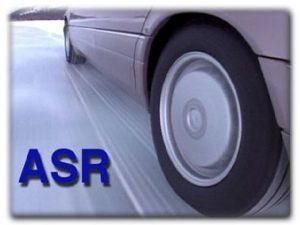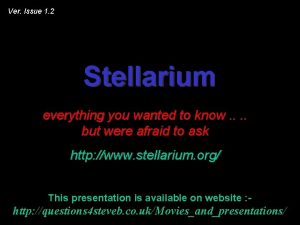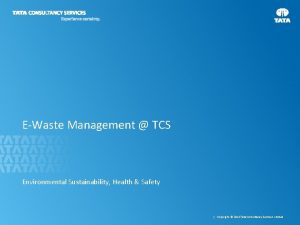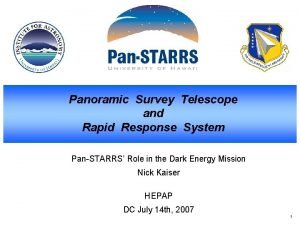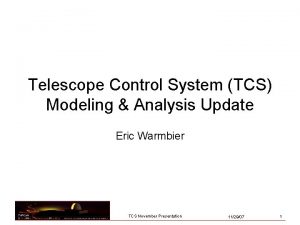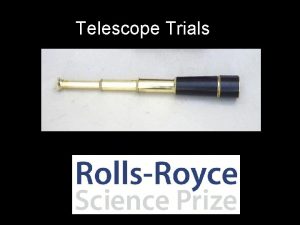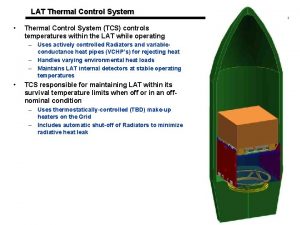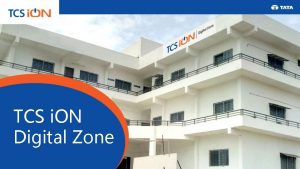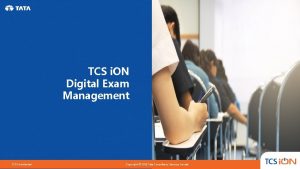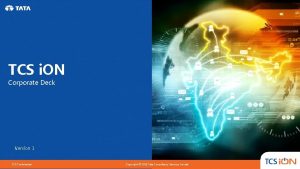Telescope Control System TCS Modeling Analysis Update Eric








- Slides: 8

Telescope Control System (TCS) Modeling & Analysis Update Eric Warmbier TCS November Presentation 11/29/07 1

Overview • New engineer assigned to work on TCS 3 project who needs to “come up to speed” • First goal was to understand operation of TCS 1 – TCS 3 incorporates some of the TCS 1 hardware – TCS 1 is a fully operational system, which makes it a perfect example to study and start at • Best method to accomplish this was to understand modify original SIMULINK model • Realistically, model will not be able to perfectly represent actual system • Model provides general trends and a good understanding of the TCS and the telescope TCS November Presentation 11/29/07 2

Documentation: Files & Format • With no prior familiarity with the TCS, it was a great opportunity to create documentation for a future reader with no prior knowledge • Documentation is contained in following documents each for TCS 1 and TCS 3 – “TCS Control Block Diagram” & “Model vs. Actual” • Nontraditional, multipurpose format created in Visio • Primarily technical in nature – “TCS Transfer Functions” • Mathcad sheet containing derivations of transfer functions – “TCS Model” & “Original TCS Model” (multiple files) • SIMULINK model (in PDF for presentation) – Revisions will be made on a continuous basis TCS November Presentation 11/29/07 3

Model Creation Method • The original SIMULINK model used as a basis • Each block was then derived from the actual TCS schematics and compared with original • Modifications were made where conflicts or missing blocks/components were found • Only electrical, software, and motor blocks derived • Mechanical model not analyzed in further detail – Created earlier with description and analysis by Tim Bond, see “TCS Servo System: Mechanical Modeling”, May 12, 2004 TCS November Presentation 11/29/07 4

Changes to Model • Most calculations agreed with existing, original model blocks with the following exceptions: – Amplifier & Motor • Motor transfer function in question • Amplifier missing or simplification excluding it not intuitive • No current output to monitor, making it difficult to compare against actual TCS system using available, measurable data – Feed forward pulses for offsets missing • Important TCS 1 feature that decreases settling time • Functionally, pulses remove charge from integrator – Slew integrator short and feed forward missing • Distinct mode with specific actions TCS November Presentation 11/29/07 5

Model Results • Model comparison with actual system is documented in “Model vs. Actual” • Modification of the model is an ongoing process • “Offset pulses” result in a faster settling time similar to the actual system (reduces overshoot) – The actual amount used in actual system isn’t known • Slew mode is also similar to actual system • Current levels do not correlate to the actual system – Model has higher currents, even on “drag” motor – Some additional, simple measurements will solve this • Same axis tachometers appear to be too independent – Testing indicates tighter coupling TCS November Presentation 11/29/07 6

Summary • Understanding TCS hardware objective met • TCS 1 model is improved, but needs some additional modification after measurements – Comparison vs. actual required • TCS 3 model will be finished once TCS 1 model is improved and verified within reasonable limits – TCS 3 uses a significant portion of TCS 1 • Emphasis shifting away from models and more to working with what is present in system using models for trends where applicable TCS November Presentation 11/29/07 7

Recommendations/Comments • Do not spend significant amounts of time improving model – Goal of understanding system hardware met – Current testing at summit on TCS 3 is yielding very positive results • Model is worthwhile updating further as time allows because it does provide a simulation that gives insight into the system and general responses to changes TCS November Presentation 11/29/07 8

